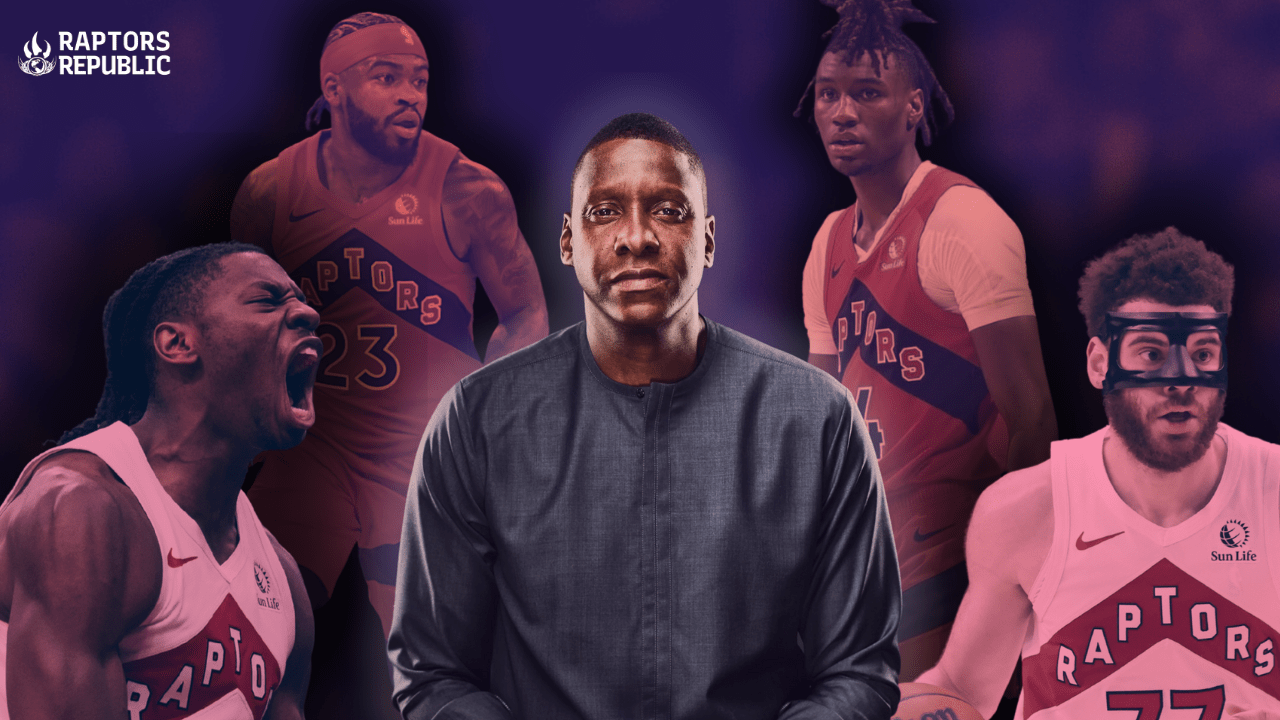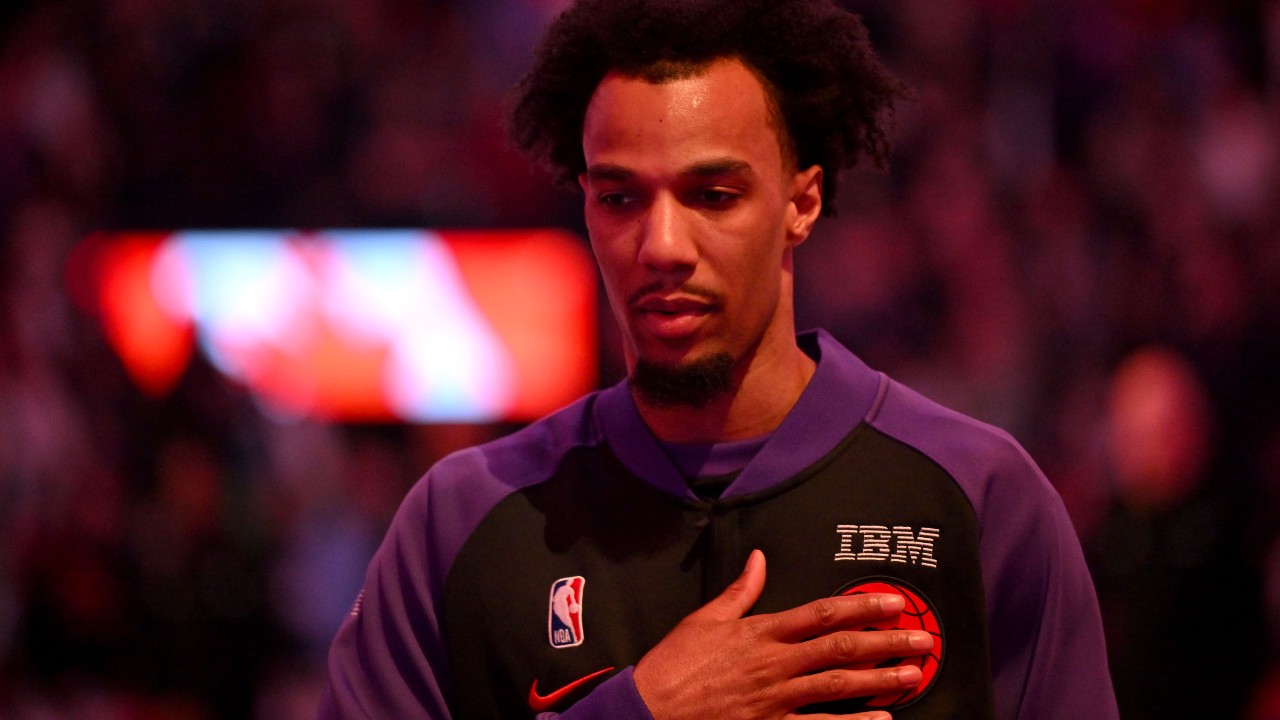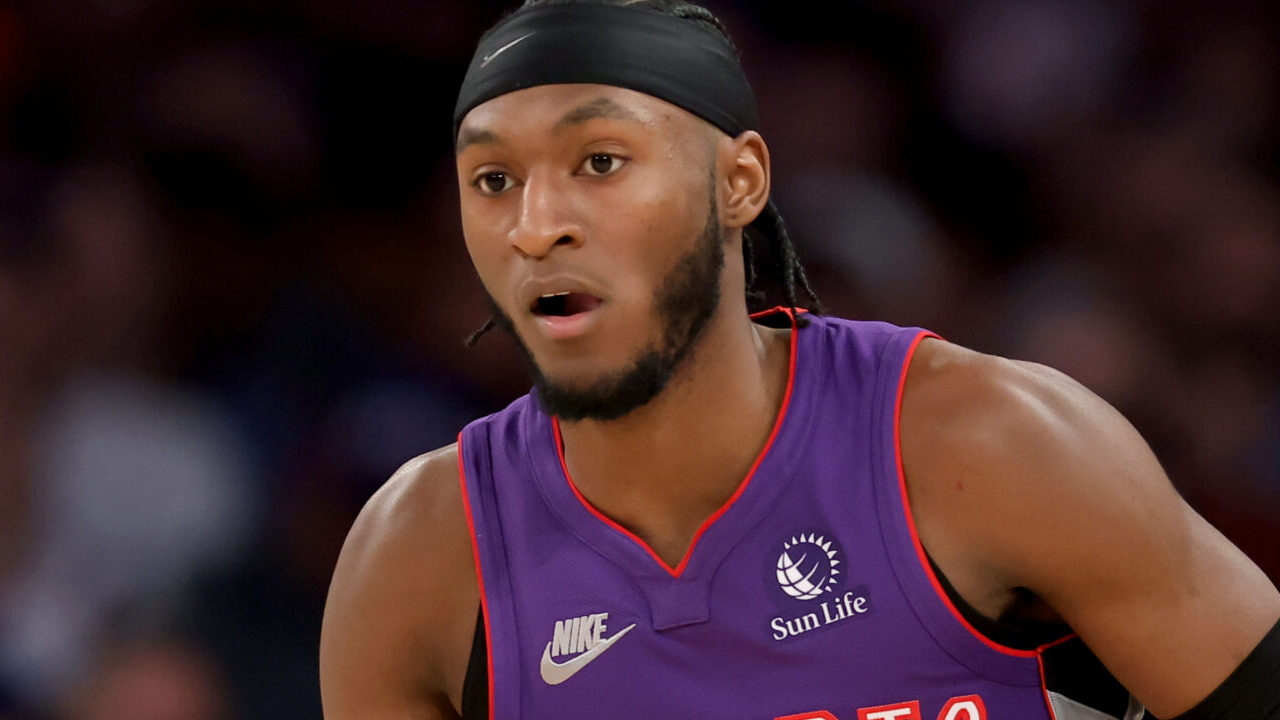Making conclusions at this point of the NBA season is a murky proposition at best.
Games are meaning less with each passing day and lineups are looking more unfamiliar. But if you sift through the slop that is March and April hoops, there are a couple of things that appear abundantly clear about the Toronto Raptors.
First, they simply seem better than other cellar dwellers around the league. Even if you take a 12-8 record since Mar. 1 (10th best in the NBA) with a grain of salt, as they’ve had the easiest schedule, the Raptors have gone 15-7 against bottom-five teams in both conferences this season. And yes, most, if not all of those squads are overtly tanking at this point, but it’s not exactly a full-strength Toronto team that has still handily dispatched a majority of them. Toronto’s third-stringers have been trouncing opponents’ third-stringers.
Watching the youngster-led Raps punch above their weight has made the organization’s alluded-to desire of being competitive next season appear all the more plausible. A squad that, with health, progression, and the addition of Brandon Ingram, should have a lot more to say about how the Eastern Conference’s postseason picture unfolds.
Part of that calculus involves the addition of a high-end draft pick — at least in the eyes of some. Depending on how the ping pong balls fall at the draft lottery on May 12, should the Raptors land, say, a top-four selection, it might even be viewed as the final piece in the puzzle president Masai Ujiri and general manager Bobby Webster have started rebuilding.
But the second thing we’ve learned throughout this season’s closing stretch is that the probability of such an outcome isn’t in Toronto’s favour. With a blowout win over the Hornets on Wednesday — and a miracle game-winning heave by Harrison Barnes to lift the Spurs over his former Warriors on the very same night — the Raptors were officially locked into seventh-best odds ahead of next month’s lottery. Giving them a 31.9 per cent chance of jumping into the top four and a 7.5 per cent prayer of leapfrogging to the No. 1 pick.
So, what happens if things simply don’t go the Raptors’ way and they don’t jump higher than seventh or stay put? Or — I say this begrudgingly — what if they fall and end up with an even lower pick?
If you share the sentiment that such scenarios would be this iteration of the team’s death knell, I don’t exactly blame you. The Raptors, for all their pluckiness, have many problems that still need solving, and the fringes of the roster are anything but a certainty. It’s currently comprised primarily of rookies, undrafted/career G Leaguers and a pair of dispensable, albeit handy, vets.
Yet, I’m not convinced the demise would be so imminent should the basketball gods not shine a light north of the border. And that’s even while admitting the Raptors’ front office has signalled by its own actions — like alternating rest days for likes of RJ Barrett, Immanuel Quickley, Jakob Poeltl and now even a rookie Jamal Shead — a fervent desire to add as high of a draft pick as possible.
I’m optimistic for a couple of reasons. Starting with a belief in the culture of development that’s being built by the organization in real time. For all the hoopla about adding a highly-touted pick, the guys who’ve been out there — the aforementioned rookies, none of whom were taken in the lottery, and fringey NBA journeymen — have looked their parts and been impactful while on the floor.
“Guys like Jared (Rhoden), A.J. (Lawson)… all the young guys that we have on our team, those guys have complete buy-in in our culture and identity,” said Raptors head coach Darko Rajakovic after a win against the 76ers in which Rhoden, Lawson and Orlando Robinson led the way with more than 25 points each, respectively. “And as a result, you have guys who are playing hard every night and competing for each other.
“It is very special, it shows such a great job that the front office is doing bringing those guys on, our (Raptors 905 – Toronto’s G League affiliate) … getting them incorporated in the system and then you see those guys step onto the floor and contribute, it’s special.”
Since Mar. 1, a Raptors team primarily centred around non-core players has held the league’s No. 1 defensive rating while ranking top five in team rebounds, assists and steals.
The numbers may only hold so much weight considering the state of the Raptors’ opposition, but it’s proof of concept more than anything. The organization is proving it can identify talent, provide those players with real opportunities and develop them for the better along the way.
Which goes beyond just the end of the season, by the way. The Raptors rank second in the NBA for total rookie minutes on the year, behind only the Wizards. Toronto’s freshmen are all over the first-year leaderboards, despite none having the clout of other top-end prospects entering the year.
So, you can turn up your nose at what may seem like meaningless end-of-season stats, but there are plenty of tanking teams in the NBA right now, yet few have a guy like Lawson tying the second-most points scored by a two-way player, which he did in March, or the only rookie in the league this year to record a triple-double, like Jonathan Mogbo did on Wednesday. Against the Hornets, the Raptors put out a five-man lineup of exclusively undrafted players and won those minutes.
And if end-of-season stats really hold less value to you, how about moments? Like when Ja’Kobe Walter defied conventional wisdom and the organization’s non-conventional decision making by hitting a game-winning triple at the buzzer against Orlando. Or, when Jamal Shead nearly did the same thing against Washington, had his lofting hook shot left his fingertips half-a-second sooner. There weren’t many other rookies taking or making those types of shots this season.
The organization very openly preached development over wins entering the year. To the point that their starting centre came out and said as much at Media Day. However, it’s much easier for Poeltl, in the midst of a four-year, $80 million extension, to make that point knowing his role and financial security. To also see the 11th, 12th and 13th players on the roster practicing that message while preaching it with an equal level of commitment, it’s a testament to the culture and foundation that’s been established by Rajakovic and the front office.
A lot of which comes from the fortitude of the group, at least according to Rhoden.
“I think the biggest thing that goes unnoticed is that they find talented players, but it’s also about the character of the people,” the 25-year-old said when I asked him about the organization’s ability to develop talent even regardless of draft status. “A lot of times people don’t understand how much that goes into winning, the character that you bring and how that just becomes infectious when you get out there on the court.”
Rhoden, who’s spent time with four other NBA organizations throughout his professional career, also made sure to emphasize how the Raptors’ camaraderie is unlike anything he’s felt with other squads. Conga lines and all.
Raptors 905 head coach Drew Jones, who (along with his staff) has been instrumental in developing many of said players, echoed those sentiments when I asked him the same question. Starting with his four pillars for building team culture: care, connection, character, and competition.
“Our job is to help prepare talent,” Jones explained. “We’re going to prepare everyone as if they’ll get an opportunity with the Raps, I think you’ve seen that with (Colin) Castleton, Rhoden, Lawson, those guys got opportunities, and they were ready.
“That’s why we do it … we have a small part in a player’s success. So, whenever we see the fruits of that labour, it’s a good feeling.”
So, while the Raptors ironically tanked their tanking efforts by rolling out a combination of rookies and fringe NBA players who overdelivered, they did also provide a sense of belief that when it is time to turn the corner, they’ll know who to hitch their wagon to.
Which is especially important for a franchise that previously built its run of success on exactly that. Internal development, not predicated on bottoming out for top-end talent, was at the core of the Raptors’ decade-long stretch of competitiveness in the East. So much so that they ended up as the first NBA team ever to win a title without a single lottery pick on its roster — which Rhoden aptly referred to as “historic.”
“If you look at the Raptors, they’ve had a lot of success finding those not highly-touted but very talented dudes,” Rhoden further explained. “Pascal Siakam, Fred VanVleet, they won a 905 championship and two years later won an NBA championship. it’s a testament to what the organization is capable of doing.”
And while the Raptors haven’t been able to replicate that peak of draft and development success, until (hopefully) recently with the 2024 rookie class, I’ll say the concerns over their post-championship drafting are a bit overblown — at least in my opinion. For starters, eight of their 12 picks since winning it all have been second-rounders, six of which were made with the 45th selection or later. Players picked at that spot aren’t supposed to stick in the league.
Of the four first-round selections, the only real swing-and-miss to this point has been Malachi Flynn, who came at the relatively low cost of a 29th pick in 2020.
| DRAFT YEAR | RAPTORS’ SELECTIONS |
| 2019 | Dewan Hernandez (No. 59) |
| 2020 | Malachi Flynn (No. 29) Jalen Harris (No. 59) |
| 2021 | Scottie Barnes (No. 4) Dalano Banton (No. 46) David Johnson (No. 47) |
| 2022 | Christian Koloko (No. 33) |
| 2023 | Gradey Dick (No. 13) |
| 2024 | Ja’Kobe Walter (No. 19) Jonathan Mogbo (No. 31) Jamal Shead (No. 45) Ulrich Chomche (No. 57) |
In saying that, however, even I’ll admit that the value of adding a top-five talent is undeniable and welcomed.
But if it doesn’t happen, the Raptors’ path to relevancy next season doesn’t summarily get wiped away. Adding a player in the 7-to-11 range (the lowest Toronto could drop), given the team’s track record and proven desire to return to its developmental roots, could still make a difference.
It may not be THE missing piece that’s been sought after, but it might just fit the puzzle all the same. At least, if the Raptors development staff has anything to say about it. All the while, even if Toronto doesn’t end up with a star in the upcoming draft, at least March and April of this season have insinuated that the team might already have one developing on the bench.



